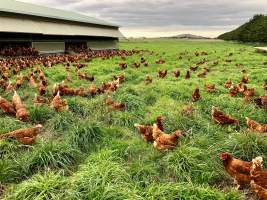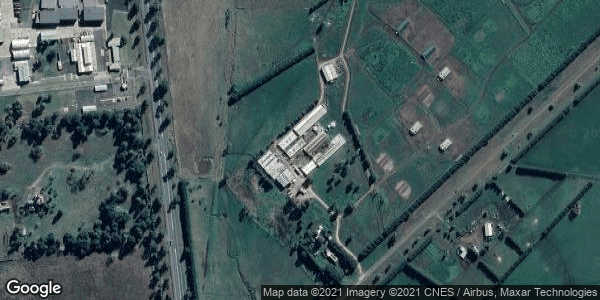- Photos
- Untitled photo VIC


Layer hens outside the shed at a free-range farm.
Even free-range farms have a multitude of welfare issues, including:
- Painful de-beaking at the hatchery, to minimise the harm they can do to each other in the confinement of the shed (www.farmtransparency.org/videos?id=b4c0eb26f9)
- Slaughter of all male chicks at the hatchery, usually by shredding them in a 'macerator' (www.farmtransparency.org/videos?id=99a1846269). This is standard across all commercial egg hatcheries, regardless of whether the hens end up in caged, barn or free range farms.
- Due to decades of genetic manipulation and selective breeding, the hens lay an egg almost every day for a total of up to 330 per year, compared to the 10-15 that a wild hen would lay. This takes a substantial toll on their physical health.
- Slaughter of hens from 18 months of age, once their egg-laying has slowed significantly enough for them to be considered 'spent'. Two common methods for killing them are sending them to a slaughterhouse (www.farmtransparency.org/videos?id=77d90d11c2), or killing them on on farm using a portable gas chamber.
Chickens naturally form and live within a social hierarchy called a pecking order, but are only able to recognise around 100 other chickens. In sheds or paddocks with thousands of other birds, their inability to maintain this pecking order results in chaos. The weak birds are picked on with no way to escape. Disease spreads rapidly; an outbreak of avian influenza at a New South Wales free range egg farm in 2013, believed to be contracted from wild ducks, led to the culling of over 400,000 farmed hens.
To find out more about Australian egg farming: www.watchdominion.com
Even free-range farms have a multitude of welfare issues, including:
- Painful de-beaking at the hatchery, to minimise the harm they can do to each other in the confinement of the shed (www.farmtransparency.org/videos?id=b4c0eb26f9)
- Slaughter of all male chicks at the hatchery, usually by shredding them in a 'macerator' (www.farmtransparency.org/videos?id=99a1846269). This is standard across all commercial egg hatcheries, regardless of whether the hens end up in caged, barn or free range farms.
- Due to decades of genetic manipulation and selective breeding, the hens lay an egg almost every day for a total of up to 330 per year, compared to the 10-15 that a wild hen would lay. This takes a substantial toll on their physical health.
- Slaughter of hens from 18 months of age, once their egg-laying has slowed significantly enough for them to be considered 'spent'. Two common methods for killing them are sending them to a slaughterhouse (www.farmtransparency.org/videos?id=77d90d11c2), or killing them on on farm using a portable gas chamber.
Chickens naturally form and live within a social hierarchy called a pecking order, but are only able to recognise around 100 other chickens. In sheds or paddocks with thousands of other birds, their inability to maintain this pecking order results in chaos. The weak birds are picked on with no way to escape. Disease spreads rapidly; an outbreak of avian influenza at a New South Wales free range egg farm in 2013, believed to be contracted from wild ducks, led to the culling of over 400,000 farmed hens.
To find out more about Australian egg farming: www.watchdominion.com
| Categories: | |
| Species: | |
| Published: | Thu 13 Jun 2019 by Josh's Rainbow Eggs |
| Captured/filmed: | Not specified |
| ID: | cd5703028a3627cc00a7 |
| Licence: |
 This work is licensed under a Creative Commons Attribution 4.0 International License. Please credit: Josh's Rainbow Eggs. Link not required. |
| Country: | Australia |
| Location: | Josh's Rainbow Eggs, Monegeetta, Victoria, Australia ) |



